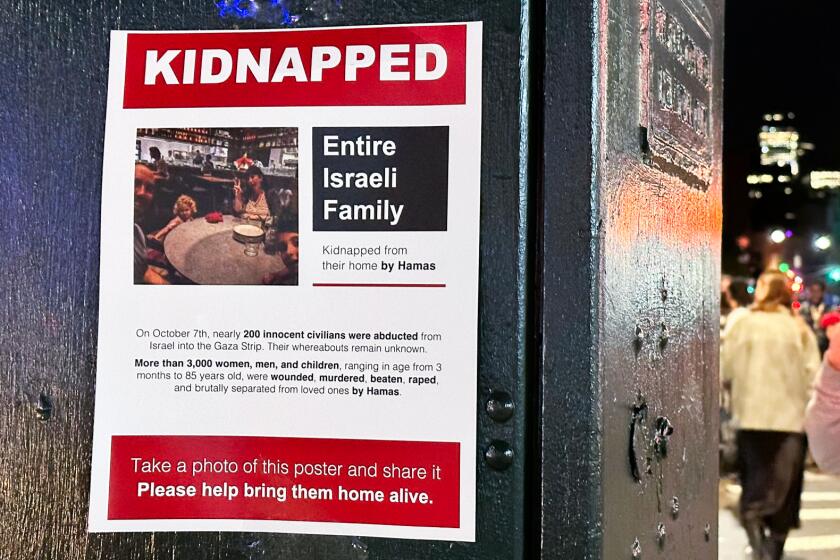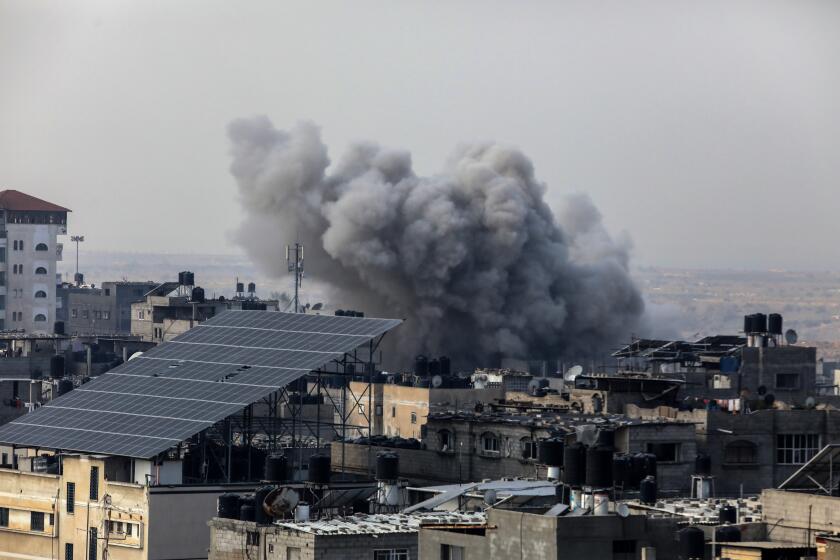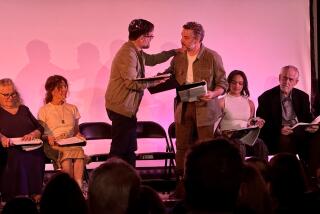Artists create massive ‘kidnapped’ posters of Israeli hostages that can’t be torn down.
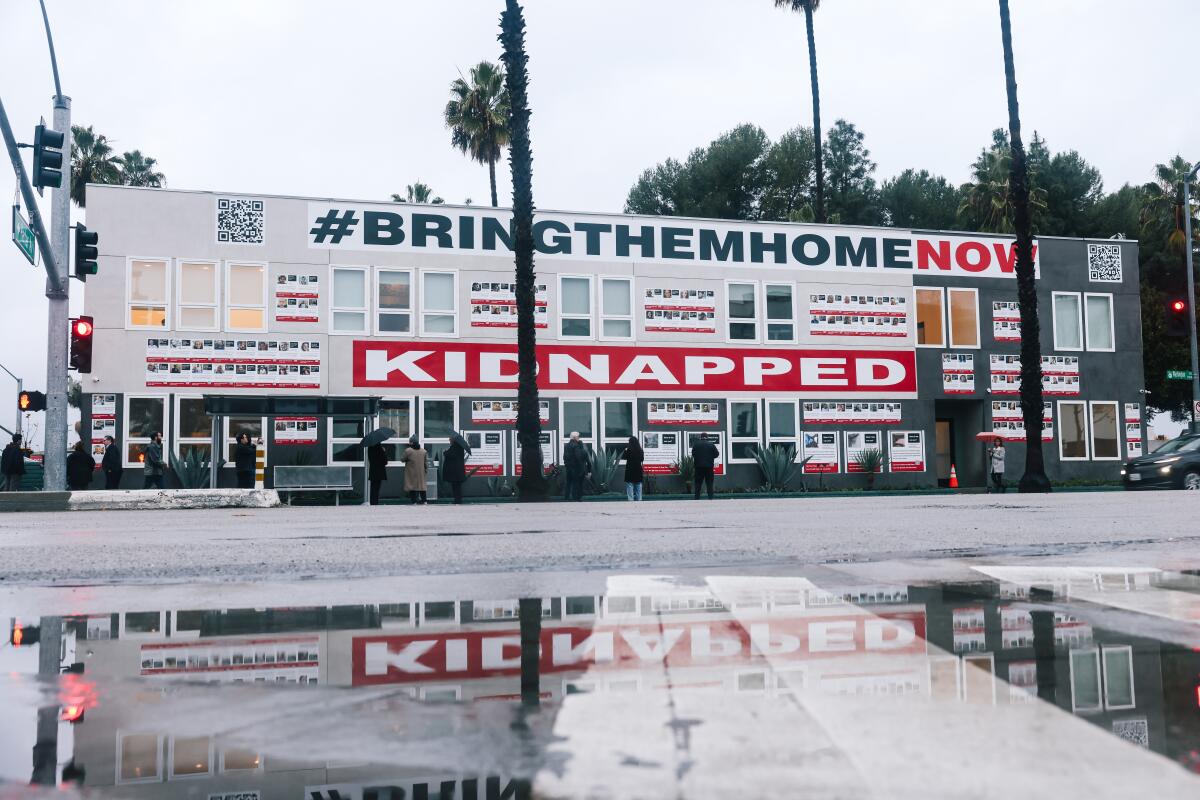
- Share via
The faces of 173 hostages being held by Hamas since the Oct. 7 attack on Israel cover the wall of an entire building in Culver City, a project that its creators say is meant to ensure the captives in the deadly conflict are not forgotten.
At about 2,500 square feet, the massive display near the intersection of Washington Boulevard and Tilden Avenue reads “kidnapped” in large white capital letters on a red background. At the top of the two-story office building, “Bring them home now” is emblazoned in large black and red lettering.
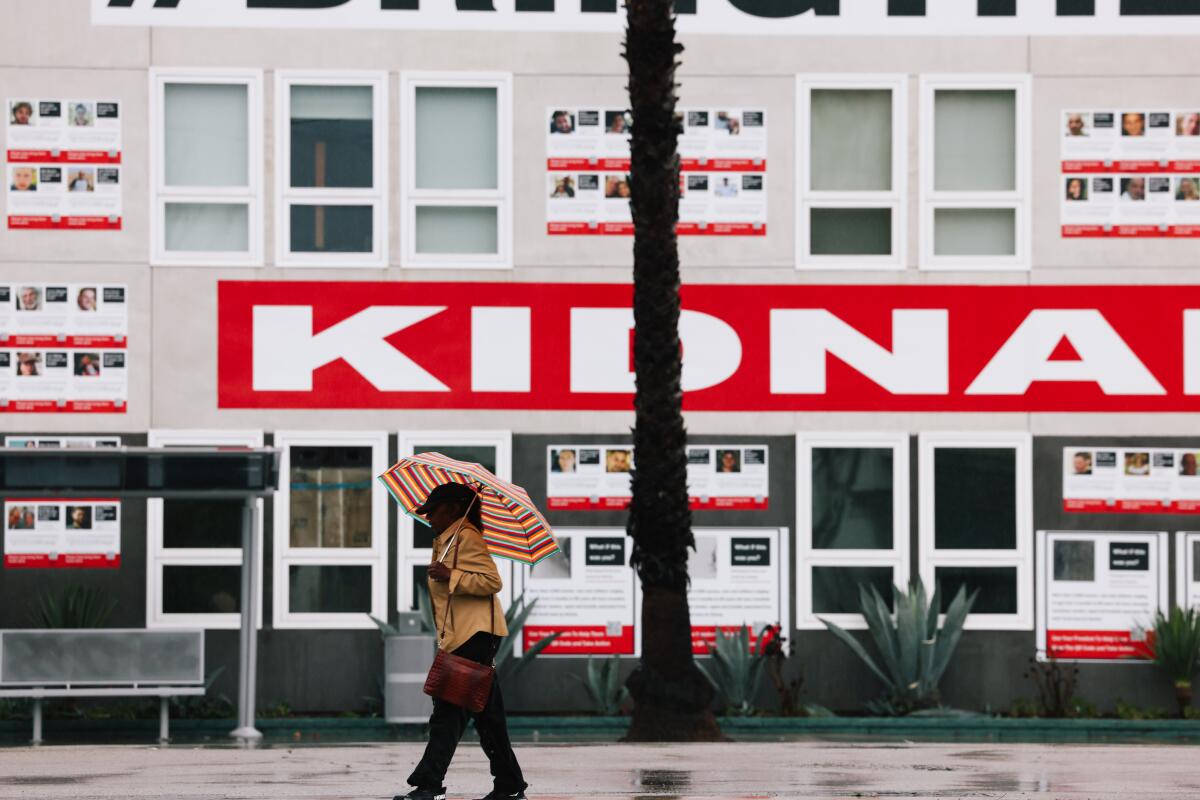
The art installation includes not just pictures of he remaining 173 hostages, but also several posters along the street level with mirrors where the picture of a captive would be.
The purpose is to force people to put themselves in the shoes of the hostages and the families still waiting for their release, said Craig Dershowitz, chief executive of Artists 4 Israel, the group behind the project.
“We wanted them to picture themselves and think, what would they do if themselves or their family members had been taken hostage,” he said. “We wanted people to come to terms with the reality, the realness of what happened.”
Completed on Sunday, the project took two days to install on a building that was offered as a canvas for the posters by Hollywood producer Ari Mark, co-founder of Ample Entertainment.
Mark said that, as a Jew, he’s recently felt frustrated at the lack of support and the narratives arising from the conflict.
Two Israeli street artists in New York started the project to call attention to those taken hostage. It has become a reminder of how deeply polarizing the war is.
“Somehow this narrative got mixed up that Jews are an oppressor rather than an oppressee, and I don’t know how that narrative came about,” Mark said.
Regardless of where people may stand politically, however, he said he believes the release of the hostages should be something everyone could support.
“If there’s one thing everyone can rally behind is freeing women, children and elderly men,” Mark said. “I don’t think that’s a political issue, Jewish or not.”
The large posters were inspired by the fliers that were first created by Isreali street artists Nitzan Mintz and Dede Bandaid. Their project, “Kidnapped From Israel,” first began in the streets of New York, quickly spreading across the world, with posters appearing in Australia, South America and Europe.
Dershowitz said Mintz and Bandaid had worked with Artists 4 Israel in the past, and called their posters a “rallying cry” for many people decrying the violence of the Oct. 7 attacks.
Videos and pictures of people tearing down those posters inspired Artists 4 Israel to respond, he said.
“We wanted to put up posters that couldn’t be taken down,” Dershowitz said. “We wanted to thwart the evil and the hatred of the people that were tearing them down.”
Mark described the size of the posters as “shocking,” and they’re meant to be.
“This is about people who are potentially tortured and living underground, who knows in what condition, and they deserve to come home,” Mark said.
Families of Israeli hostages being held by Hamas in Gaza are appealing for the safe return of their loved ones in visits to Los Angeles and other stops in their global campaign.
The purpose of the project was not just to create an image and a reminder of the hostages so large that it could not be ignored, but also to reach people in their everyday element, said Sacha Roytman, chief executive of an anti-bigotry coalition called Combat Antisemitism Movement, which teamed up with Dershowitz’s group on the project.
“This is where people are walking, thinking, and speaking, and this is where we need to share this reality,” he said.
The Oct. 7 attack by Hamas killed more than 1,200 people and sparked an ongoing conflict in Gaza that has resulted in the deaths of more than 18,700 Palestinians, raising tensions and inspiring protests.
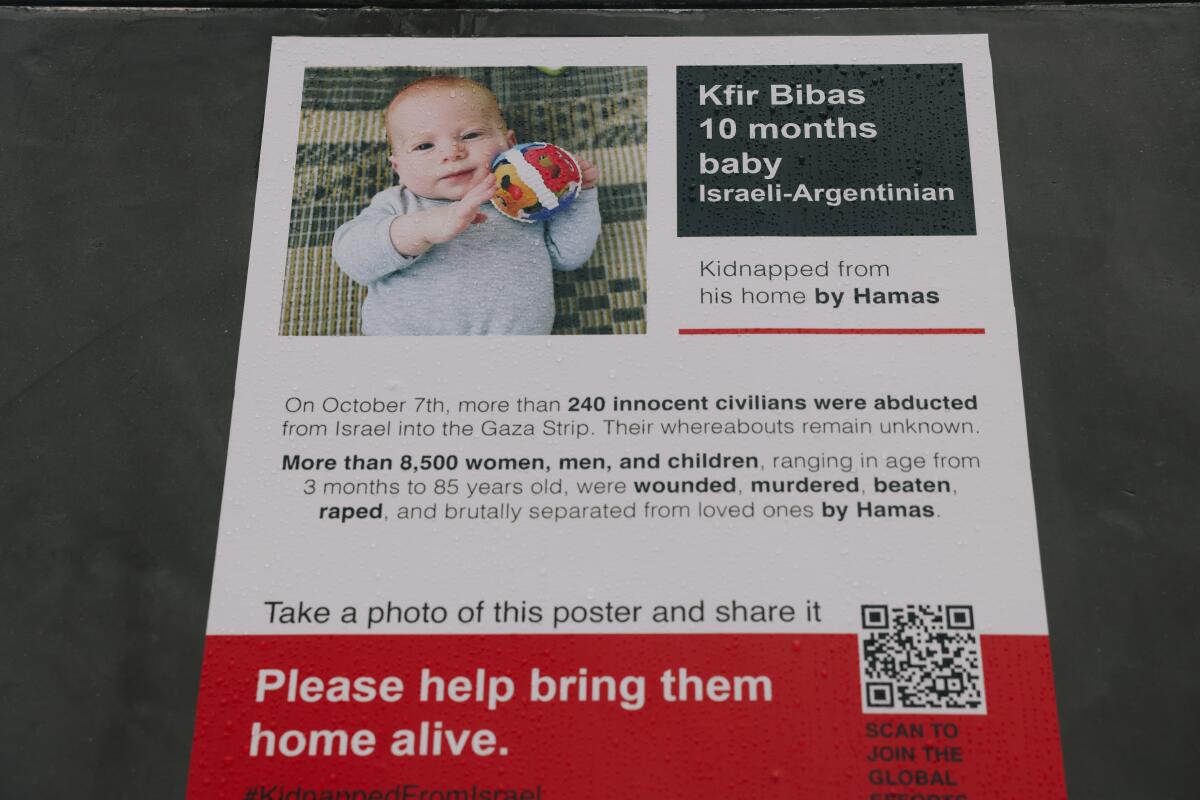
In California, pro-Palestinian protesters shut down the Bay Bridge in November during President Biden’s visit to the area for the APEC summit. On Friday, demonstrators demanding a cease-fire blocked traffic near Los Angeles International Airport.
The Anti-Defamation League has also reported what it calls an “unprecedented” rise in antisemitic incidents in the U.S. since Oct. 7.
The “kidnapped” posters became one of many points of contention and polarization. Videos showed people tearing them down, with some of the perpetrators being identified and some losing their jobs as a result.
The Middle East boils down to a contest between a desire to exterminate the enemy and a desire to live in peace. The U.S. should weigh in on the side of peace.
In Culver City, the display has only been up for two days, but Dershowitz said there had already been unsuccessful attempts to tear it down.
“We’ve had people on the bus staring out the bus window, we’ve had people come up and curse at it, we’ve had people try to rip it off,” he said. “We’ve had people come up and get teary-eyed.”
He understands the installation can have a polarizing effect, but Dershowitz said the intent is to change the conversation and for everyone to place themselves in the shoes of those being held hostage, if only briefly.
It’s unclear how long the installation will remain, he said.
“We hope to keep it up until all the hostages are released,” he said.
More to Read
Sign up for Essential California
The most important California stories and recommendations in your inbox every morning.
You may occasionally receive promotional content from the Los Angeles Times.
